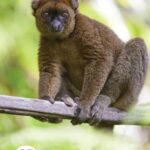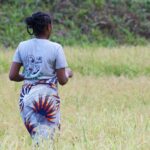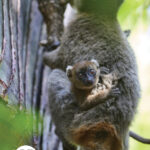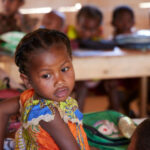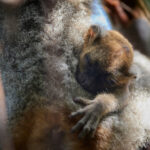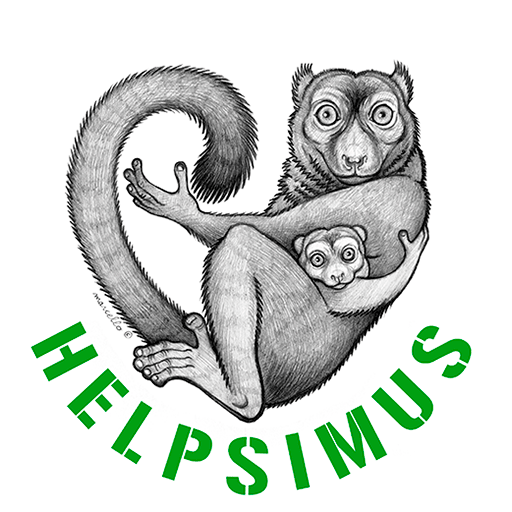The population of Greater Bamboo lemurs that we protect lives in a very degraded and highly anthropized environment made up of agricultural land, bamboo forests and small portions of residual forests.
When the VOIs (village associations) were created, ecotourism was identified as a means of promoting biodiversity and developing the local economy.
Thus, since 2018, we have been developing an ecotourism project in one of the forest fragments of Sahofika on the territory of the Group 5 of Greater Bamboo lemurs.
This forest fragment depends on the VOI SAMIVAR and borders the access road to the village of Sahofika. It is located about ten km from the town of Ifanadiana.

The Group 5 is composed of more than sixty Greater Bamboo lemurs and shares its territory with a family of Red-bellied lemurs whose habituation has begun in 2018.

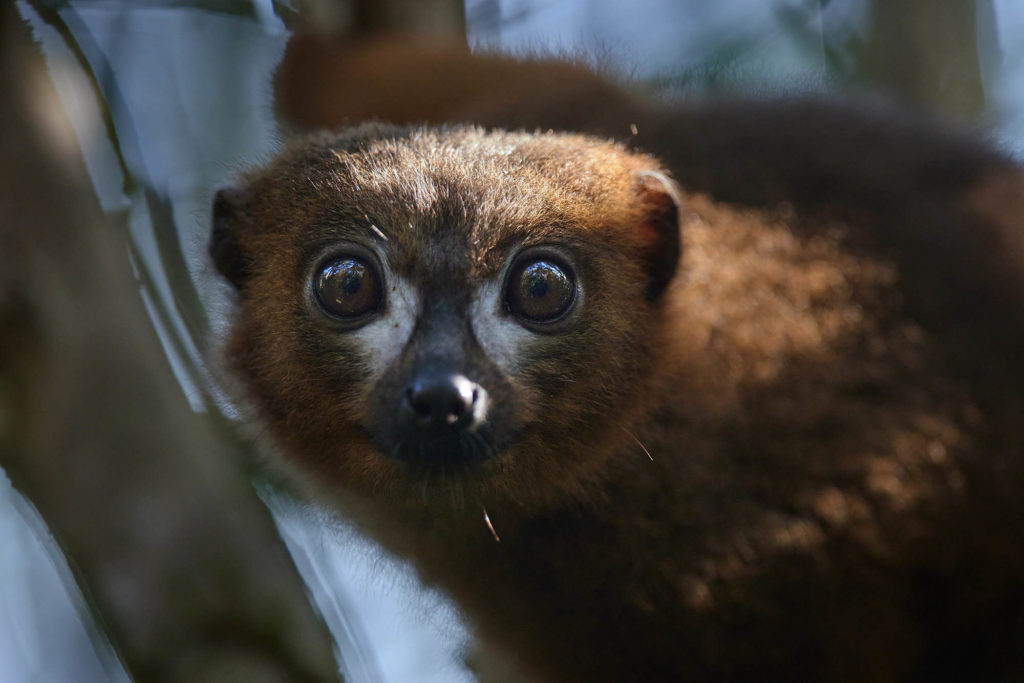
Red-bellied Lemur © S. Meys
A floristic inventory showed that the forest fragment is home to several precious wood species such as Dalbergia baroni (rosewood) as well as endemic species from Madagascar (Ravenala madagascariensis).

Forest of Sahofika © D.Roullet
The fauna inventories that are still in progress have confirmed the presence of many animal species: Mouse lemurs (Microcebus spp.), Dwarf lemurs (Cheirogaleus spp.), Ring-tailed mongoose (Galidia elegans), forest rats (several species), Blue coua (Coua caerulea), Reynaud’s coua (Coua reynaudii), Madagascar long-eared owl (Asio Madagascariensis) etc.
In October 2019, we hired two women and one man among the members of the VOI SAMIVAR to become tourist guides. Their training, initially designed to last three years, has been extended until 2022 due to the successive lockdowns related to the Covid-19 pandemic. Indeed, out of the 3 traineeships initially planned, the tourist guides have only been able to complete one in Ranomafana National Park for the moment.
However, since their recruitment, the tourist guides have been participating in animal monitoring alongside Helpsimus agents which has enabled them to acquire a good knowledge of the flora and fauna present in the Sahofika forest fragment.
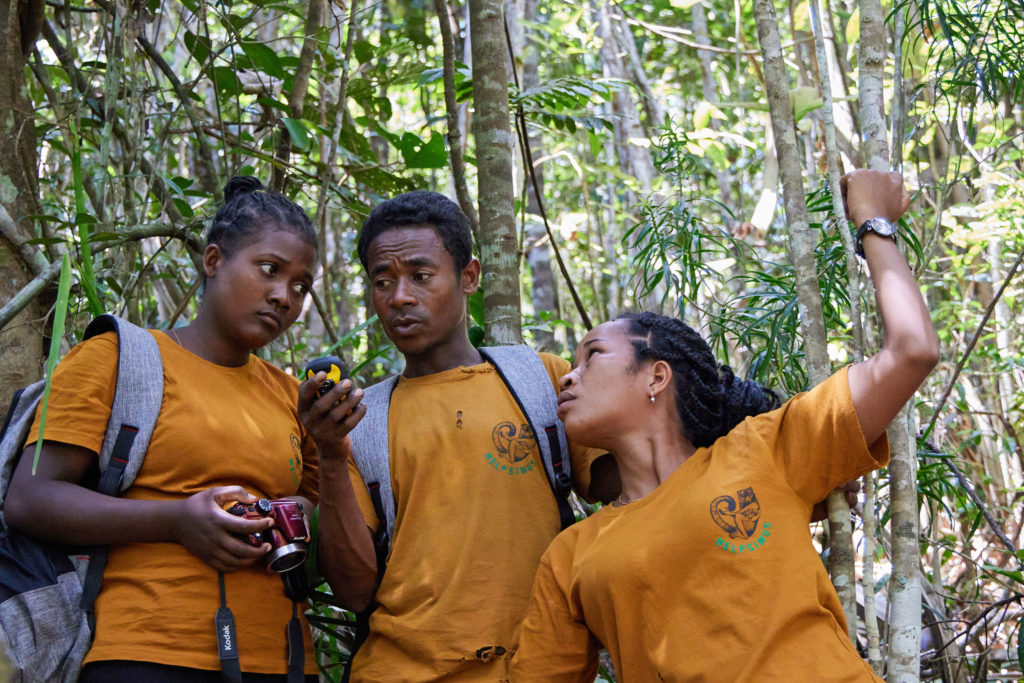
Francine, Charles and Lova, the tourist guides © S. Meys
In addition, since 2020 they have overseen the habituation of a female owl spotted in 2017 in Sahofika.

Young owl © S. Meys
Some paths have been set up in the forest to facilitate the visit. We also built a reception office at the forest entrance with a parking lot by the road side, allowing the visitors to park as close as possible to the reception office.

The entrance to the Sahofika forest © S. Meys
Same-day visits can be organized from Ranomafana.
While this ecotourism project aims to create additional income for local communities, its main objective is to bring value to the natural resources in an area where human activities are very intense.
The presence of ecotourists who will make a long journey to reach Sahofika and visit this forest to observe the local wildlife will help raising awareness among communities regarding the richness of their biodiversity.
The ecotourists, whose number will be limited (access to the site remains rather difficult), will live a unique experience by observing one of the world’s most endangered lemurs in exceptional conditions.
With this project, we wish not only to involve local communities in the long term preservation of their biodiversity but also inspire ecotourists among whom we hope to arouse a desire in getting involved.
In parallel to the visit to the Sahofika forest, we are developing 3 completely new craft projects in our partner villages:
– Job’s tears jewels
A French jewellery designer has created a bracelet and earrings with seeds from a plant called « Job’s tears » which grows wild in our area of intervention.
She came to our study area in Madagascar where she trained a dozen women in manufacturing these jewels which will be sold in Europe under the label she has created and help generating sustainable income for women.
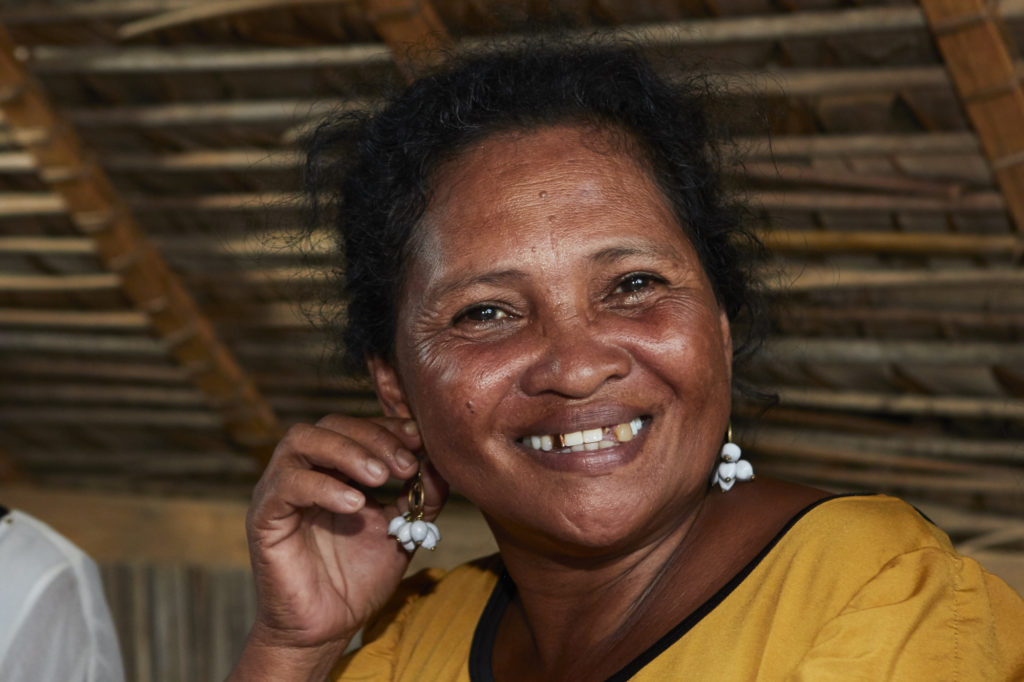
Some women also make the small raffia boxes in which the jewels are presented.
– Sculptures in dead wood
This project was born from an encounter in Sahofika with a young man from the village who carved wooden animals. He requested our support to help him acquire suitable tools and improve his sculpting technique.
In the end, 3 persons benefited from the training with a Malagasy professional sculptor whose particularity is to create sculptures only from pieces of dead wood picked up on the ground.
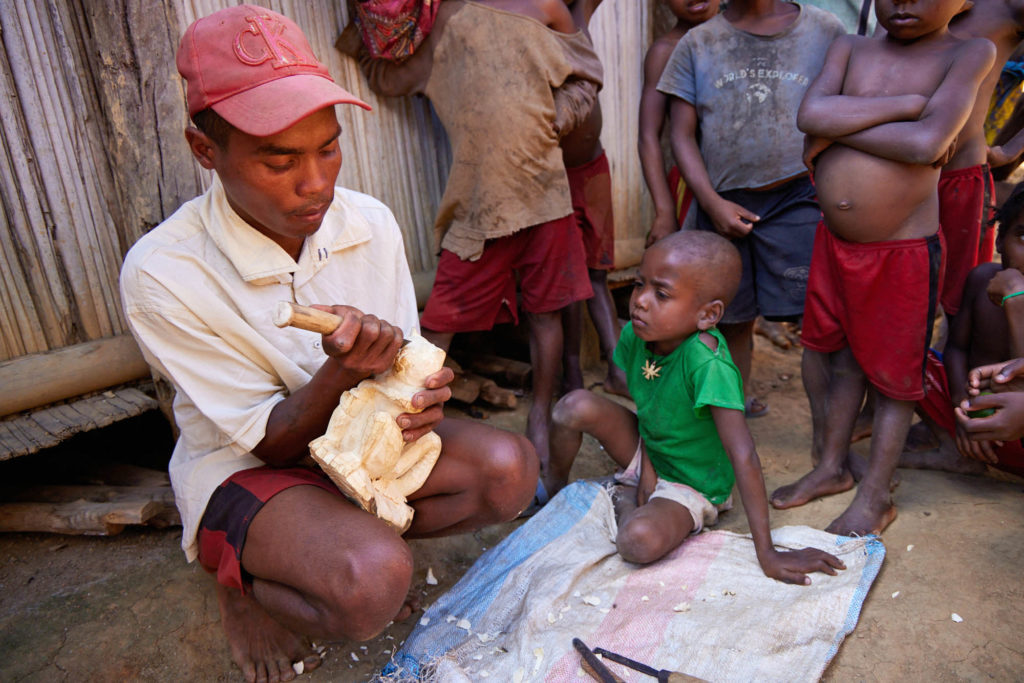
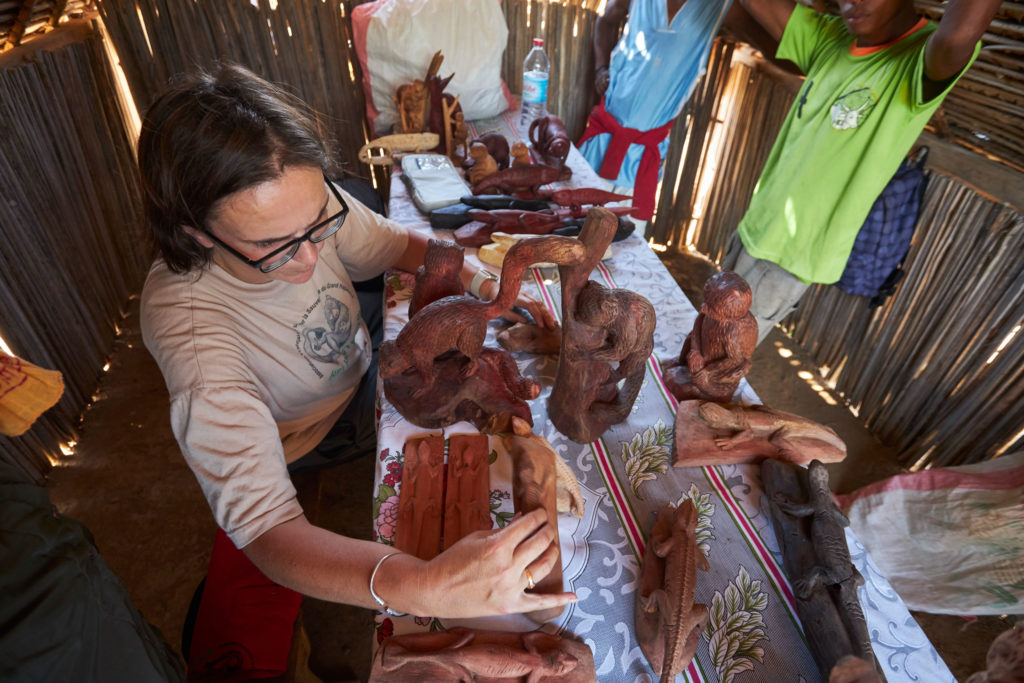
– The embroidery project
This project was initiated in collaboration with an embroiderer from Ranomafana.
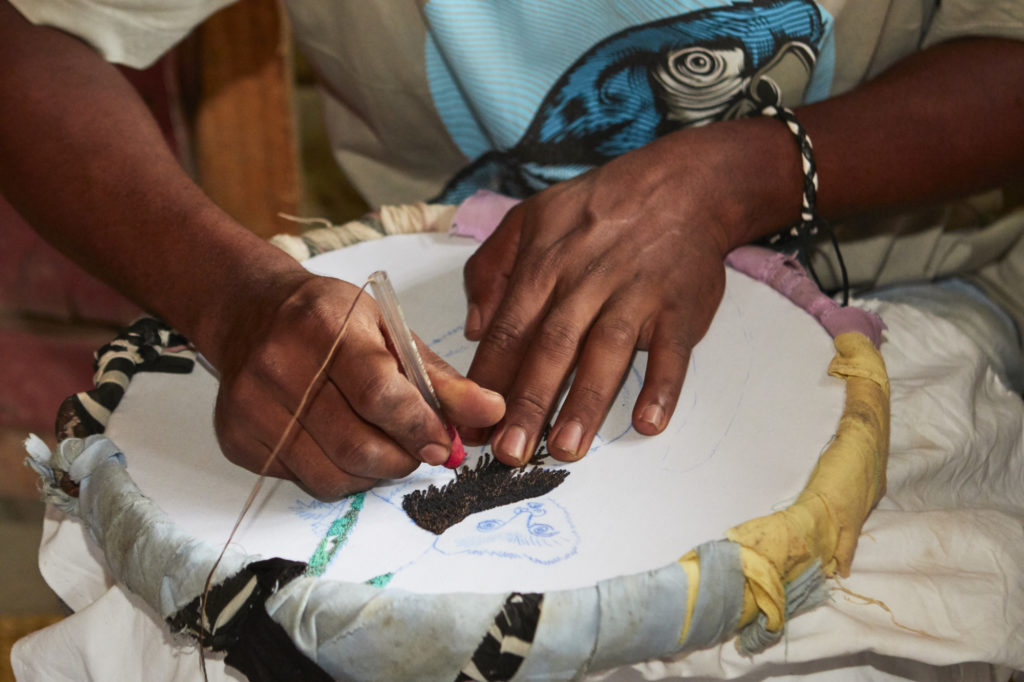
wo women from the village of Ambodigoavy who wanted to start a similar activity were invited to participate in this project.
Their training has been suspended by the pandemic but has not, however, been completely interrupted.
The original project which aimed to make embroidered bags has indeed been temporarily reoriented towards the manufacture of cloths masks as part of the fight against the spread of the coronavirus.
The women were thus able to familiarize themselves with the use of their sewing machine. In addition, they are currently trained in the manufacture of cloth sanitary napkins. These additional activities should allow them not to be completely dependent on ecotourism eventually.
Except jewellery, handicrafts will be sold in a shop we have built at the entrance to Ranomafana national park.
This local will make it easier for artisans to sell their products by offering them directly to tourists visiting the national park. We also plan to sell other items, in particular raffia objects made by a few women from our partner villages.
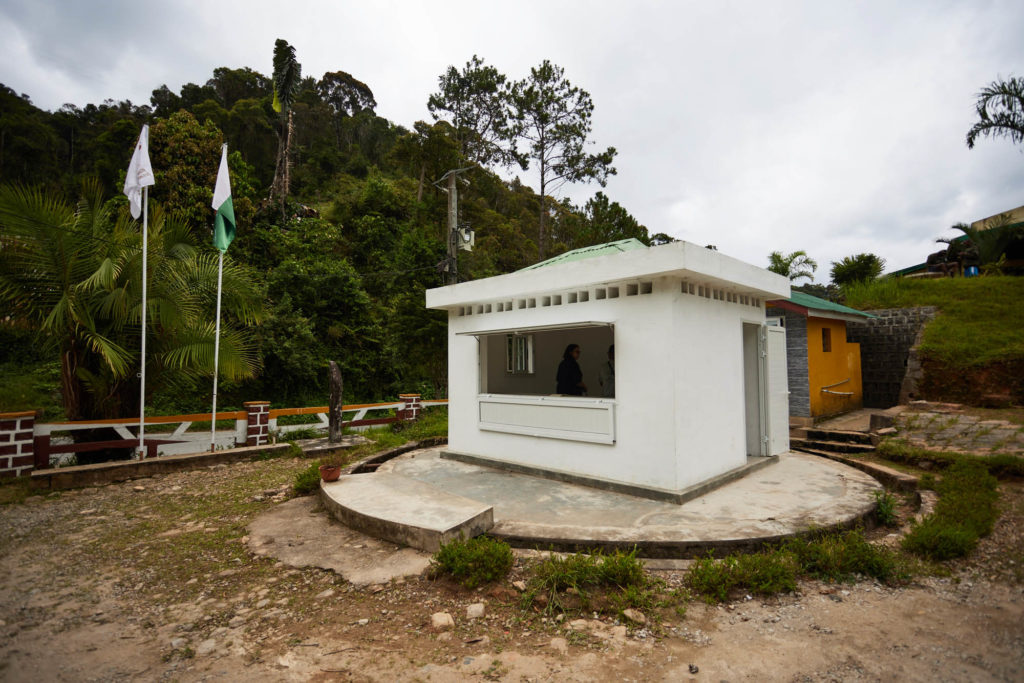
Helpsimus shop at Ranomafana© S. Meys
The implementation of these various projects has unfortunately been greatly slowed down by the health crisis. However, this imposed delay has benefited their maturation.
The Sahofika forest fragment should be open to the visitors in 2022, as will the shop located at the entrance of the national park.
This project is co-funded by IUCN Save Our Species. The contents of this article are the sole responsibility of Helpsimus and do not necessarily reflect the views of IUCN.

